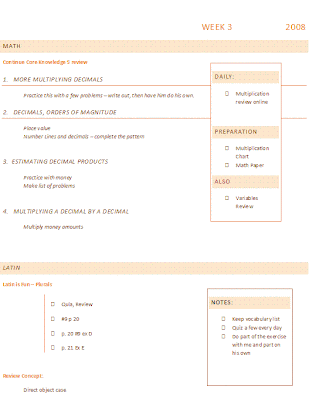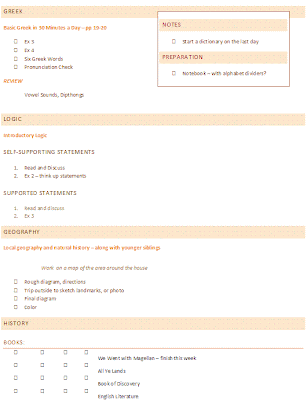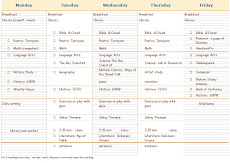

 These are the plans for Week 3 for my Year 7 child. ...a little late, since Week 3 is almost over! I don't think I'll bother to write these out in advance like this anymore, because this week we ended up going past what I had written out in some subjects, even though we didn't do anything on Labor Day. And other subjects we didn't even get to. It doesn't really seem to make sense to write out specific page numbers and exercises, now that we're not really using many workbooks.
These are the plans for Week 3 for my Year 7 child. ...a little late, since Week 3 is almost over! I don't think I'll bother to write these out in advance like this anymore, because this week we ended up going past what I had written out in some subjects, even though we didn't do anything on Labor Day. And other subjects we didn't even get to. It doesn't really seem to make sense to write out specific page numbers and exercises, now that we're not really using many workbooks.Instead, I think I will just describe what I want to cover that week, and give general page number guidelines.



No comments:
Post a Comment